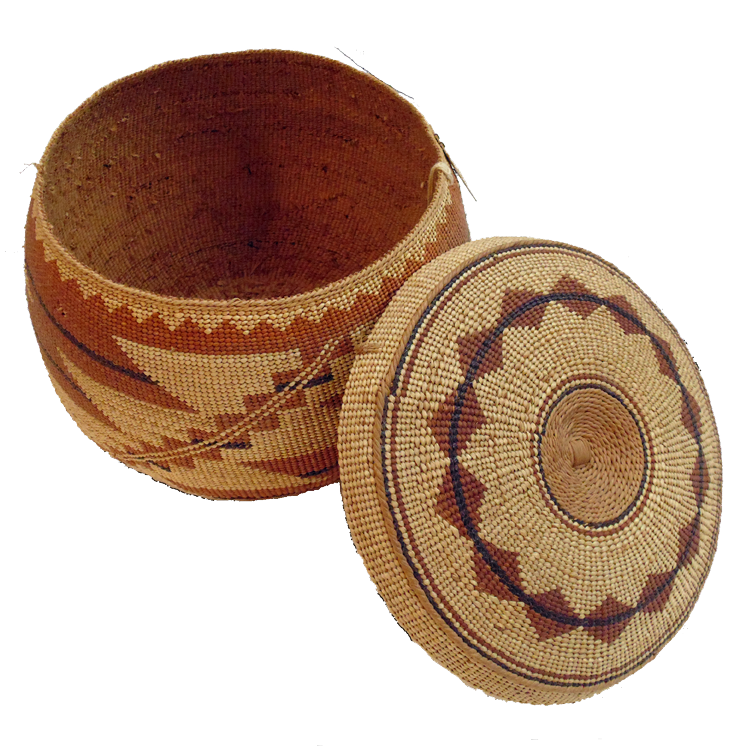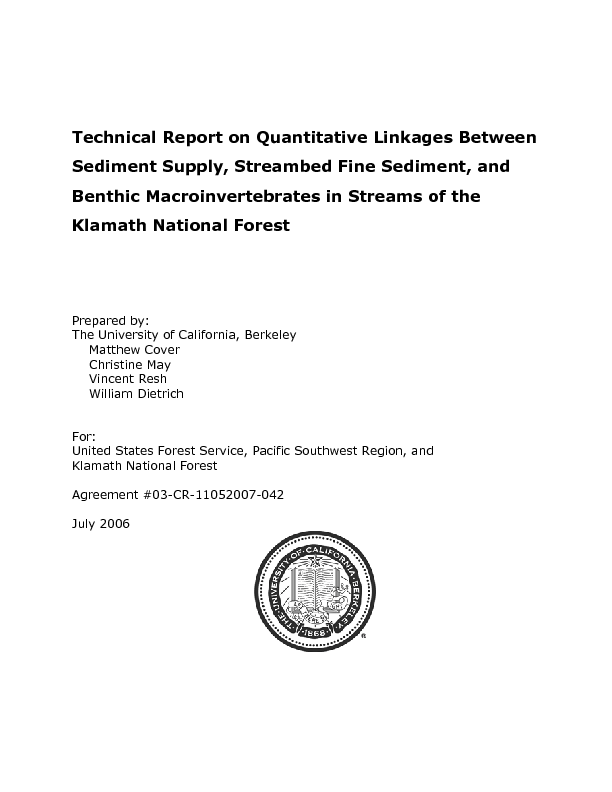Technical Report on Quantitative Linkages Between Sediment Supply, Streambed Fine Sediment, and Benthic Macroinvertebrates in Streams of the Klamath National Forest
Description:
A major gap that currently limits accurate prediction of cumulative watershed effects is the lack of quantifiable relationships between sediment supply, channel conditions, and the magnitude of a biological response. We addressed this uncertainty by testing in six streams of the Klamath National Forest whether increased sediment supply resulted in elevated levels of streambed fine sediment stored in pools and riffles, and whether fine bed material in turn was correlated with spawning gravel quality and altered benthic assemblages. Results of this study indicate that there are significant, measurable differences in streambed fine sediment levels between basins in the Klamath National Forest with high and low sediment supply as estimated by two models: (1) a fine sediment model based on a locally-calibrated version of the universal soil loss equation and (2) an empirical mass-wasting-based landslide model. Increased sediment supply was directly correlated with fine sediment stored in pools and riffles, and with an overall fining of the median grain size. Model estimates of sediment supply were inversely correlated with subsurface flow rates, which have been directly correlated with salmonid egg survival in laboratory studies. Increased fine sediment was also associated with minor changes in the benthic invertebrate assemblage. There was no correlation between fine sediment and common biological metrics used to describe the benthic invertebrate assemblage such as taxa richness, EPT richness, and total abundance. There were, however, detectable changes in the abundance of several taxa (e.g. Chironomidae, Oligochaeta, Attenella delantal), and an overall reduction in presumed prey availability for salmonid fishes. These empirical relationships advance our present-day abilities to monitor and predict cumulative effects by quantifying linkages between land use effects on hillslope sediment supply, channel conditions, and biologically significant habitat characteristics.Provenance: Collection: AFRI Food Security.


